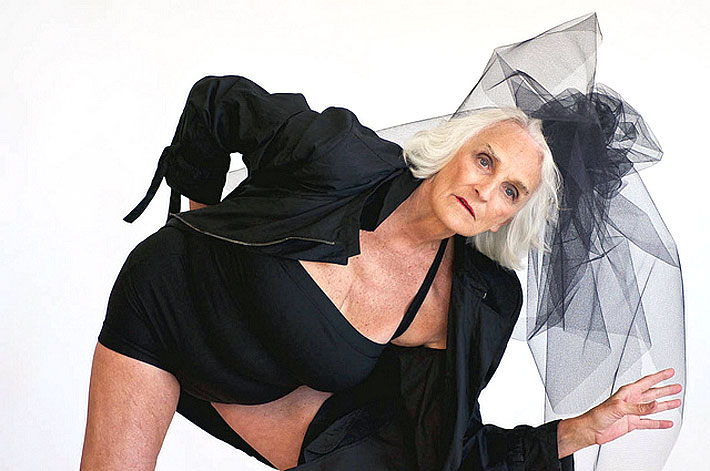With its combination of live music, computer art and post-modern dance, “MindFluctuations” will be a performance that explodes with color, movement and energy.
The show premieres March 19 at Lisner Auditorium, and at the nexus of it all is choreographer and Professor of Dance Maida Withers, who this year celebrates the 40th anniversary of her company, Maida Withers Dance Construction Company.
Because “MindFluctuations” marks such a seminal moment, Ms. Withers has brought in talent from across George Washington University: Visiting scholar Tania Fraga has created computer visualizations that will be projected onstage while professional dancers—including GW alumni and students—wear Emotiv neuroheadsets programmed to influence aspects of Ms. Fraga’s computer art based on brain activity. GW Music Professor Steve Hilmy will play live electronic music with New York-based composer John Driscoll, and Corcoran School sculptor and professor David Page created an aluminum mask for the production.
The show breaks ground technologically and artistically, but that’s nothing new for Ms. Withers. George Washington Today spoke with her about the new production, her career on the frontline of post-modern dance and her 49 years teaching at GW.
Q: You’ve seen the trajectory of modern dance firsthand. Can you talk about your early relationship to the medium?
A: A revolution happened in visual arts in the ’30s and ’40s, and it happened in dance in the 1950s. It was my generation who said, “There are only five companies, and I don’t want to dance like that or think like them. I want to dance about my life now and my experiences now.”
We were the rule breakers, and it fit my personality very well. I was born in a small house in a large family, and because there were eight of us, I was always excited by interaction and engaging with other people. A lot of it was timing and matching up my nature with the moment when dance was redefined.
Q: What is your creative vision for “MindFluctuations,” and how does it epitomize your 49 years as a choreographer?
A: If you saw this work tomorrow, and then months later, the computer art, called “cyber worlds,” would be different—it’s completely unpredictable. It’s the same thing with live music and dancing. There is a live element that is not set in stone, and it is very typical of my work to allow fresh energy to happen in public so not everything is polished. I’m much more interested in the vitality of the interaction of the artists.
I do think a little bit—a lot—out of the box. I would say it’s comfortable for me to not always be on the same page as everyone else. However, there is a lot of… it’s not pain, exactly, but you don’t fit into a lot of places where it would be best if you did fit in and thought like everyone else. So I think that creativity has its finest hour in the sciences and in the arts, where people are encouraged to think out of the channels.
I also love performing wearing the neuroheadset. I am just imagining my expressive body and my mind joining together in the live performance—what a great accomplishment, being able to share the activity of my brain! I think the show is going to be a spectacular, one-time event.
Q: Much of your work has been informed by collaboration—in this case, with GW talent. How has working with others influenced “MindFluctuations”?
A: I’ve been working with Steve for the last 10 years, and Tania has collaborated with me since the 2000s. I’m the person that said, “Let’s bring these people together and make it happen,” and that collaboration has essentially become the program. Even though I’m presenting this project, what the other artists bring as collaborators is ultimately what the work is.
GW is a really important part of my history and my family. I have huge relationships with about 150 alumni. I usually involve GW people in my work after I have taught them. I am actually best with artists who are also creative and want to make it work, because I’m demanding and inclusive. I’m not just using their bodies—I want their artistic relationship, and that requires maturity. A young person might be more obedient or wanting to please, so it’s easier if they’re mature and bring some life experience.
Q: One of your students recently said that as a GW professor, you help dancers transition from students to professionals. How do you accomplish this?
A: It’s one thing to learn to do a high kick or a handstand or something. It’s another to understand the artistic nature of a movement and how to add your own essence to that material.
There is an intellectual part of being an artist, and you have to have such a strong belief in the importance of it, because nobody cares if you don’t do it. No one is saying, “Please, come and be an artist.” But for the people who need it and have something to contribute, it’s helpful to find someone who can carry you along and get you to believe in it and stay with it.


